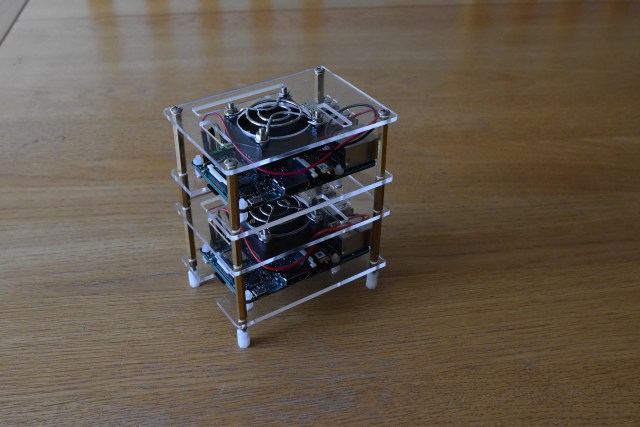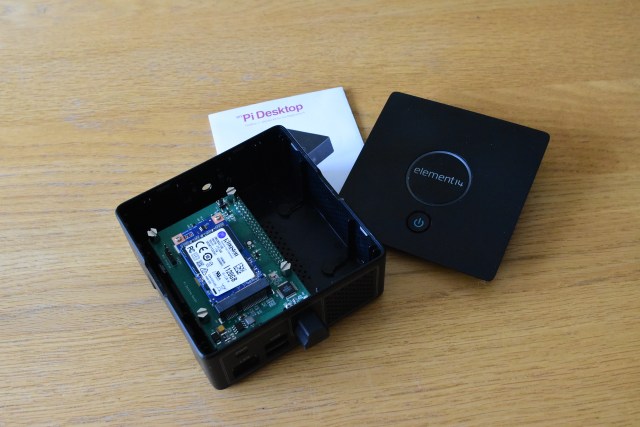I have three news Development projects and Study areas that I have been working on in January 2018 as follows:
Asus Tinker Board SQL Data base server.
Almost all computer based projects including those in the Makers community at some point need to (create , story and retrieve data), this data can be in the form of (configuration parameters, users/sensor input, log files and statistics analysis). This data can be stored locally within each application design, however there are some considerable advantages to storing all application data externally from application related data files and their constants and variables.
One clear advantage of this is that if you use an external data-base management system such as an SQL-server, your data and its structurer will both be available to any external application that wishes to use it. SQL servers are fully structured systems and document within themselves the structure of any database they contain and manage. So you can then use any available management tools (e.g. pgadmin3), of which there are many that relate to an SQL data-base management system, to view the structure of tables to include in your code.
The ability to analyses the data structures involved within applications is one of the biggest restrictions when in comes to extending or debugging applications , some of which may have been written many years before and where documentation may be poor or lost altogether. You can if permitted access and view the structure of data files from a good SQL managment tool within minutes and begin to design or debug your application within the hour.
Also as a rule a fully featured SQL server application also places your data behind a secure curtain along with providing fully secure backup and restore facilities, one of the issues with small scale SBC applications is that they are viewed mainly from a local system perspective, yet the data they produce can often be mission critical, as such all their data should be transfered to remote systems for the reasons of (security, analysis and backup).
Debian based Linux, the most popular distribution of Linux for the SBC(Single Board computer) maker market, including the ASUS Tinker board and the Raspberry Pi, have the ability to install versions of MYSQL and POSTGRESQL 9.6 or newer, so that you can store all your applications data locally on the same SBC (however as stated above this is not advisable). In my own project here I will make use of two ASUS Tinker boards, one acting as a client and the other as the SQL-server using TCP/IP based SQL drivers and coding applications in (C++ and/or Python) and using a client/server connection between the two systems. Constructing this Client/server model will show how its possible to connect any SBC based application into a much larger industrial based environment, such as in a factory setting where application data may need to be logged in order to provide control information and production reporting statistics.
In the bigger picture, I hope to use 2018 in order to update my SQL data based management skill, using this project as a starting point adding some new and up-to date qualifications including certificates in postgresQL and possibly MYSQL. My I.T. background is located firmly in this area having worked on IBM UNIX/LINUX and MS-Windows server installations for many years.
The other two projects I am currently working on are as follows :
Psion Series 5 – Second life Project
I have almost completed a project to give the 1990’s Psion series 5 and new life as a serial terminal within a SBC network, this is a great use for this old machine. The Series 5 from Psion is widely still held with respect within the Retro Hardware community. During my current projects with it I am amazed as to how usable I still fine this machine.
Way back in the late 1990’s Psion assembled a large team of designers and makers to get this product to market and its amazing that they completed the project within twelve months, whats even more amazing is that despite for one fault with the screen cable that even some twenty years on can be repaired and returned within two weeks, these machine are still working and stayed in great condition.
The Photo above is of the Ericsson version of the Psion 5MX, basically the same machine, with some stronger parts added and a small shift in the great set of applications installed on the ROM , including a full set of office based applications and more importantly for this project a full Programming language OPL used to transfer daat via a serial cable, along with a full VT100 serial terminal application allowing for a terminal into the BASH sheel, Amazing for 1999!.
This project added a text based terminal to a single board computer, allowing for such areas as (Shell terminal control, Text based monitoring, SQl text based command control, VIM editing, Python script running and editing, etc …..). Its worth noting that many Raspberry pi and SBC projects can involve running the PI from battery power , so can the Psion 5 system also work using two AA batteries that will last for some twenty + hours of constant use, providing for a great Raspbery pi companion!.
Raspberry PI Element 14 PIDesktop project
The third on going project I am working on is the creation of a Raspberry PI 3 desktop computer.
The Element 14 creation, the PiDestop is a late introduction to the Raspberry Pi extended product range , it includes one of the best cases every produced for this system , however this is not the most impressive feature!
This kit also includes a HAT board for the Raspbery Pi that includes an system on/off switch, a system battery (using a CR2032 ,3.0V,Lithium, 210 mAh) for the system clock backup and an interface for an SSD drive unto 1TB.
It is the ability to both boot an OS from and SSD drive and use the same drive for system storage that interested me the most about this project, upto the Raspberry Pi 3 all storage on the raspberry pi systems had to be limited to using an SD card, using an SSD drive however should increase available storage and speed up access times.
I will during a series of posts detail how to setup this system and make the best use of all the new features provided by the Element 14 product.
It also worth noting that this kit can be used with any SBC that has the same layout and GPIO pin configuration as the Raspberry PI 3 such as the ASUS tinker board and the Pine systems ROCK64 Boards.



